The fact that the Foo Dogs were out of Cubi probably didn't help.I can't remember who or where I heard the quote, but I seem to recall an old-timer describe the way the US-3s were used as "an IG investigation waiting to happen." Guess there were a lot of bro deals made for cargo and/or seats?
-
Please take a moment and update your account profile. If you have an updated account profile with basic information on why you are on Air Warriors it will help other people respond to your posts. How do you update your profile you ask?
Go here:
Edit Account Details and Profile
You are using an out of date browser. It may not display this or other websites correctly.
You should upgrade or use an alternative browser.
You should upgrade or use an alternative browser.
Little known / experimental aircraft
- Thread starter Randy Daytona
- Start date
I can't remember who or where I heard the quote, but I seem to recall an old-timer describe the way the US-3s were used as "an IG investigation waiting to happen." Guess there were a lot of bro deals made for cargo and/or seats?
The fact that the Foo Dogs were out of Cubi probably didn't help.
Funny, that is the exact same quote I heard an old Foo Dog say when describing them.
We had at least one VRC-50 refugee in my squadron and he had all sorts of stories about them, to include softball team and shopping trip shenanigans. For the last part of their life the squadron was in Guam and they did a lot of trips to the PI and Japan for all sorts of weekend fun. Of course they also were stuck in Diego Garcia for long stretches, their original role, and delivered ATO's during to the carriers Desert Storm from Saudi so it wasn't all hookers and blow.
NASA still has a lot of cool and unusual aircraft and I recently saw some news on the both of these classic airliners now doing science work.
A former Pan Am and United 747SP that is now a flying telescope, SOFIA:

An even older DC-8 flying laboratory:
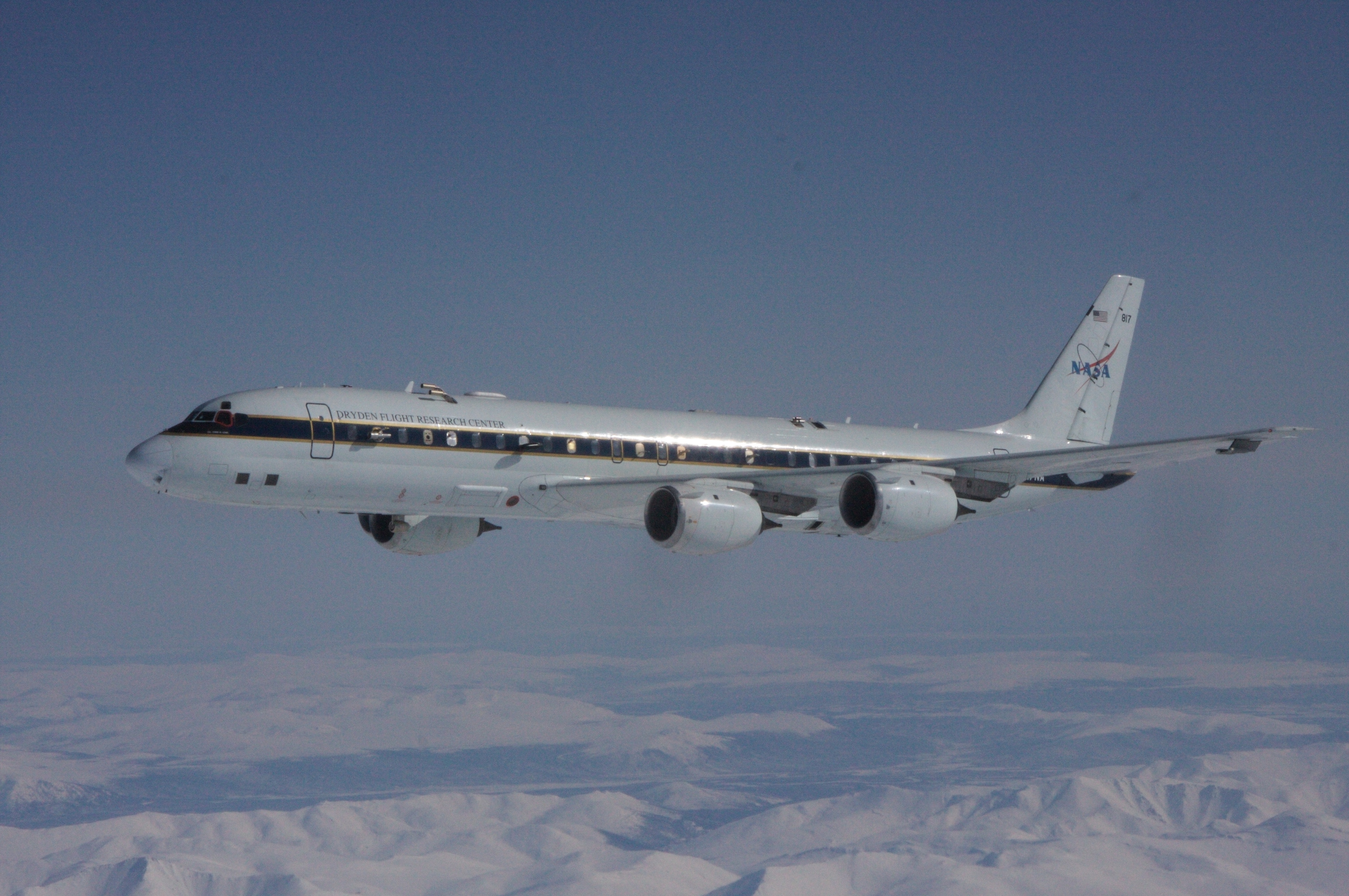
A former Pan Am and United 747SP that is now a flying telescope, SOFIA:

An even older DC-8 flying laboratory:

My understanding is the bottom wing of biplanes is really for stability, not so much the lift it generates. There's so much interference drag from the upper wing there wouldn't be much point in control surfaces unless the wings are very staggered.
When you said staggered wings, I immediately thought of one of the most beautiful airplanes ever made - the Beech Staggerwing. Outside of a warbird, I can't think of a plane I would rather have. Of course, if you're gonna get the Staggerwing, you should also get an Auburn Cord automobile and go full Art Deco....
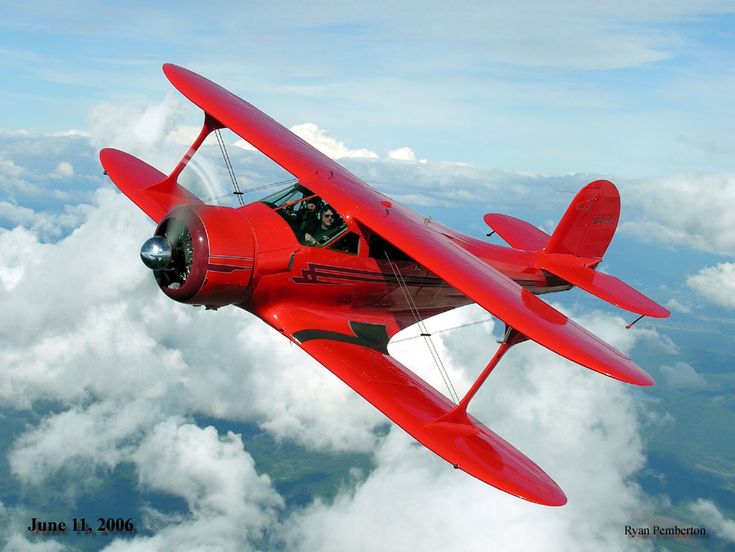

Beautiful airplane, the Beech stagger wing - and good news for you Randy - they also have warbird cred! They were used as bombers during the Spanish Civil War, the Chinese (and the AVG) used them as medical evacuation planes against japan, and the US used them as the UC-43 (army) and GB-2 (navy). They were very popular for coastal anti-submarine work.
Now, on to biplanes. In broad terms the bottom wing is the "flying wing" and the top wing is the "landing wing." A main wing spar that is capable of working in a monoplane configuration (cantilever wing) is a difficult thing to build and when made if wood is a big, big thing. Back when engines were too weak or the exchange of horsepower for weight not good enough it was smarter and easier to build biplanes. The concept is simple. The bottom wing flies the airplane (lift and maneuverability) while the top wing keeps the bottom wing from warping in flight and keeps it in place when landing...but the bottom wing is actually two half wings simply bolted to a bulkhead in the fuselage. The whole thing is held together by wing struts and wires. The best part, biplanes are remarkable maneuverable. The worst part, the upper wing is almost pointless once in flight and blocks your view.
But there is a fix! Someone smart engineering guy figured out that wires could replace the upper wings if they provided the same "flying" and "landing" support through a diamond shape. The bottom wires allow the wings to "fly" while the top wires keep them from coming off at landing (or take off). This is where you get that other Art Deco classic the P-26 Peashooter (a beautiful airplane in my opinion). See the wires here:
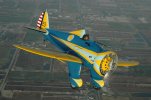
Now, on to biplanes. In broad terms the bottom wing is the "flying wing" and the top wing is the "landing wing." A main wing spar that is capable of working in a monoplane configuration (cantilever wing) is a difficult thing to build and when made if wood is a big, big thing. Back when engines were too weak or the exchange of horsepower for weight not good enough it was smarter and easier to build biplanes. The concept is simple. The bottom wing flies the airplane (lift and maneuverability) while the top wing keeps the bottom wing from warping in flight and keeps it in place when landing...but the bottom wing is actually two half wings simply bolted to a bulkhead in the fuselage. The whole thing is held together by wing struts and wires. The best part, biplanes are remarkable maneuverable. The worst part, the upper wing is almost pointless once in flight and blocks your view.
But there is a fix! Someone smart engineering guy figured out that wires could replace the upper wings if they provided the same "flying" and "landing" support through a diamond shape. The bottom wires allow the wings to "fly" while the top wires keep them from coming off at landing (or take off). This is where you get that other Art Deco classic the P-26 Peashooter (a beautiful airplane in my opinion). See the wires here:

Good stuff. It came up in the Professional Reading thread, but I'm currently reading an interesting new book about WW1 aviation: Marked for Death: The First War in the Air.
As British historians tend to do, he focuses more on the British RFC, RNAS, and aircraft industry than other countries' (even as he notes the biggest technical advances were mostly French and German). Still, there's a lot of good stuff about how utterly in its infancy aviation was during the war, how little anyone really knew about aerodynamics or tactics, and everything was being quite literally made up as they went along. The tinkering with monoplanes, biplanes, triplanes, and sesquiplanes gets good discussion.
As British historians tend to do, he focuses more on the British RFC, RNAS, and aircraft industry than other countries' (even as he notes the biggest technical advances were mostly French and German). Still, there's a lot of good stuff about how utterly in its infancy aviation was during the war, how little anyone really knew about aerodynamics or tactics, and everything was being quite literally made up as they went along. The tinkering with monoplanes, biplanes, triplanes, and sesquiplanes gets good discussion.
Now an R-44 has been tested with batteries: http://www.aviationtoday.com/rw/military/unmanned/Battery-Powered-R44-Flies-in-California_88800.html
Last Boeing fighter until the Rhino . . .But there is a fix! Someone smart engineering guy figured out that wires could replace the upper wings if they provided the same "flying" and "landing" support through a diamond shape. The bottom wires allow the wings to "fly" while the top wires keep them from coming off at landing (or take off). This is where you get that other Art Deco classic the P-26 Peashooter (a beautiful airplane in my opinion). See the wires here:
Engineers and designers are going crazy - some wild stuff people are dreaming up.
http://www.nationaldefensemagazine....ricHybridAircraftEngineResearchTakingOff.aspx

http://www.nationaldefensemagazine....ricHybridAircraftEngineResearchTakingOff.aspx

The Douglas XB-42 "MixMaster" medium bomber. The original version had 2 Allison V-12 engines driving the contra-rotating propellers; the uprated "A" version included podded jet engines under the wings.
The Douglas XB-42 Mixmaster was an experimental bomber aircraft, designed for a high top speed. The unconventional approach was to mount the two engines within the fuselage driving a pair of contra-rotating propellers mounted at the tail in a pusher configuration, leaving the wing and fuselage clean and free of drag-inducing protrusions. In December 1945, Captain Glen Edwards and Lt. Col. Henry E. Warden set a new transcontinental speed record when they flew the XB-42 from Long Beach, California to Bolling Air Force Base in Washington, D.C. (c. 2,300 miles). In just 5 hours, 17 minutes, the XB-42 set a speed record of 433.6 mph (697.8 km/h).
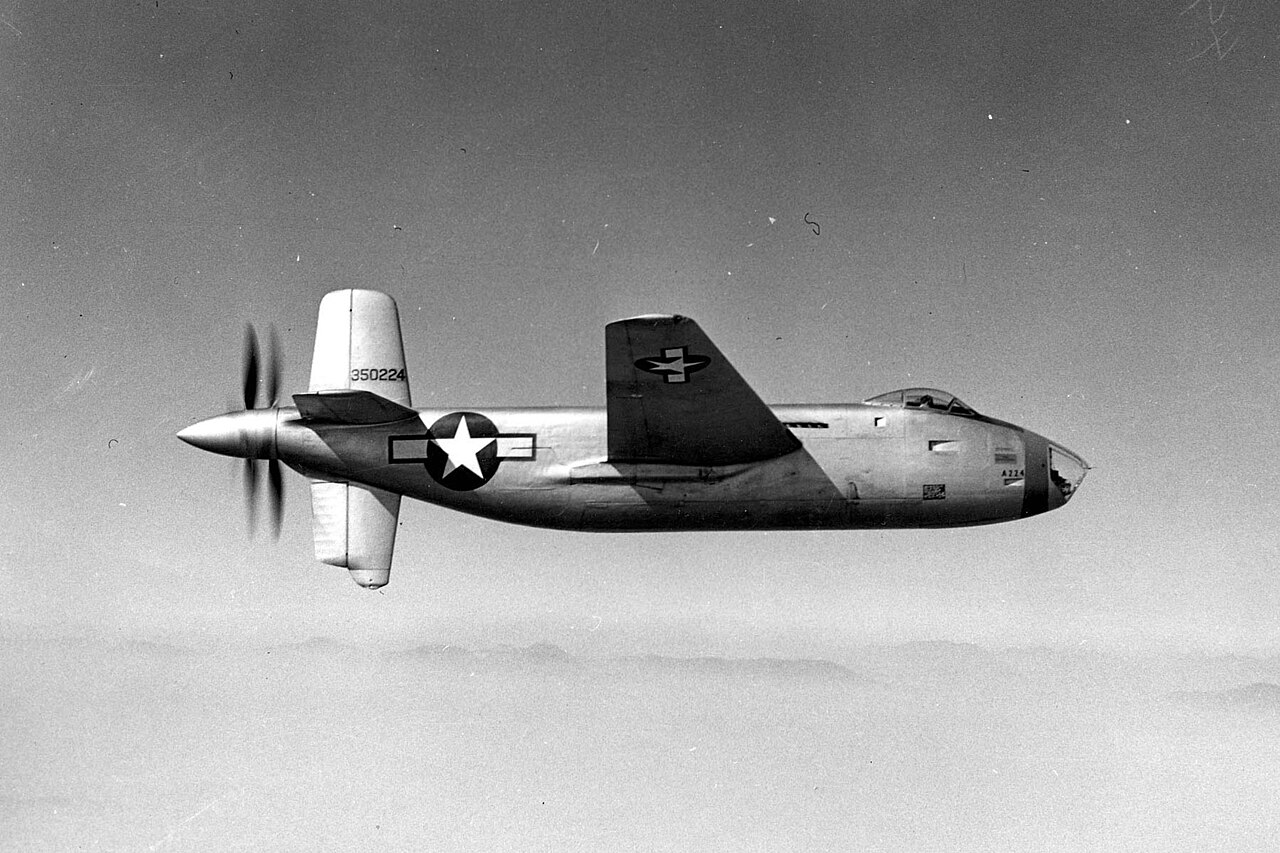
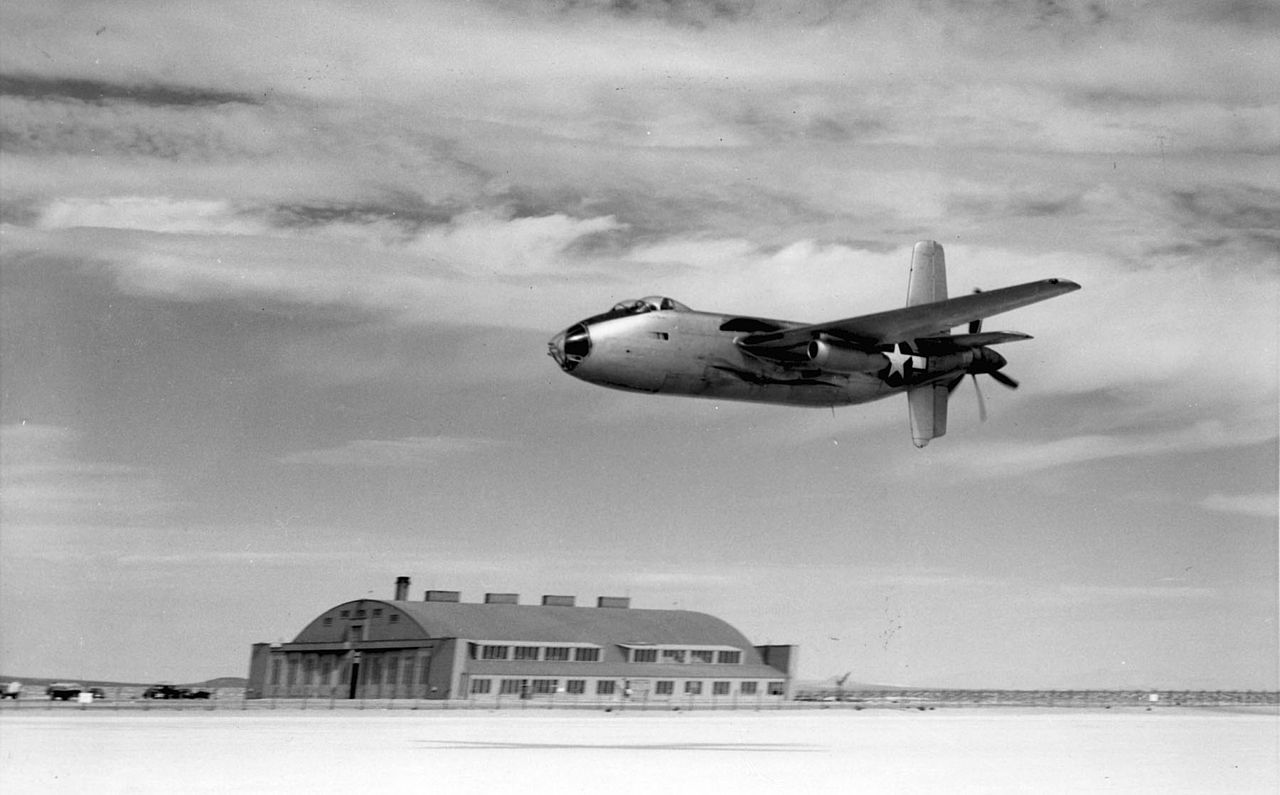
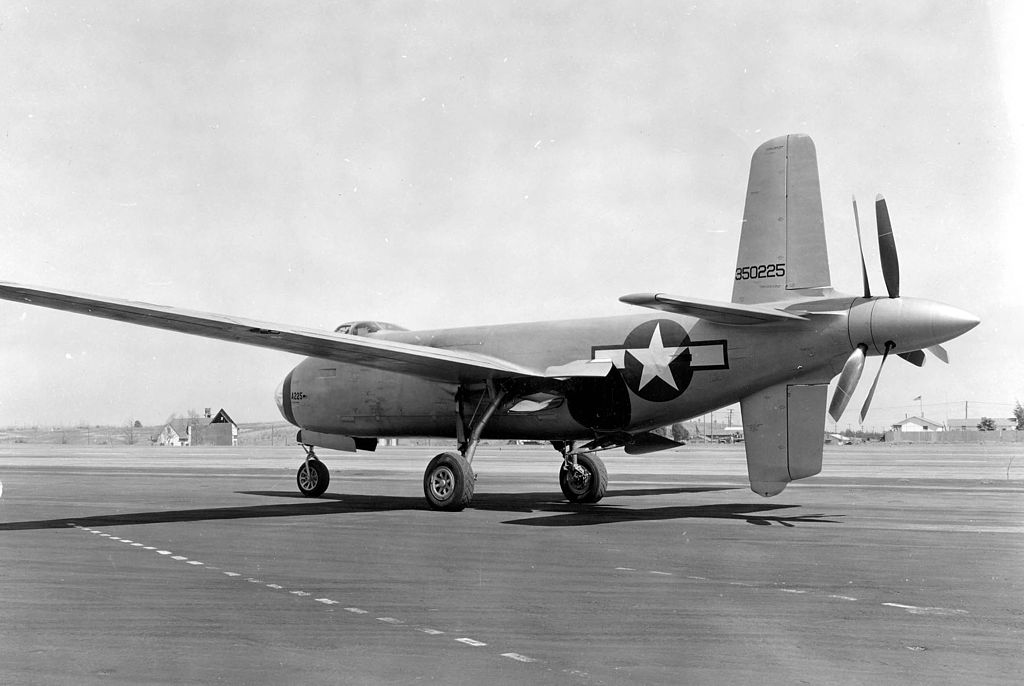
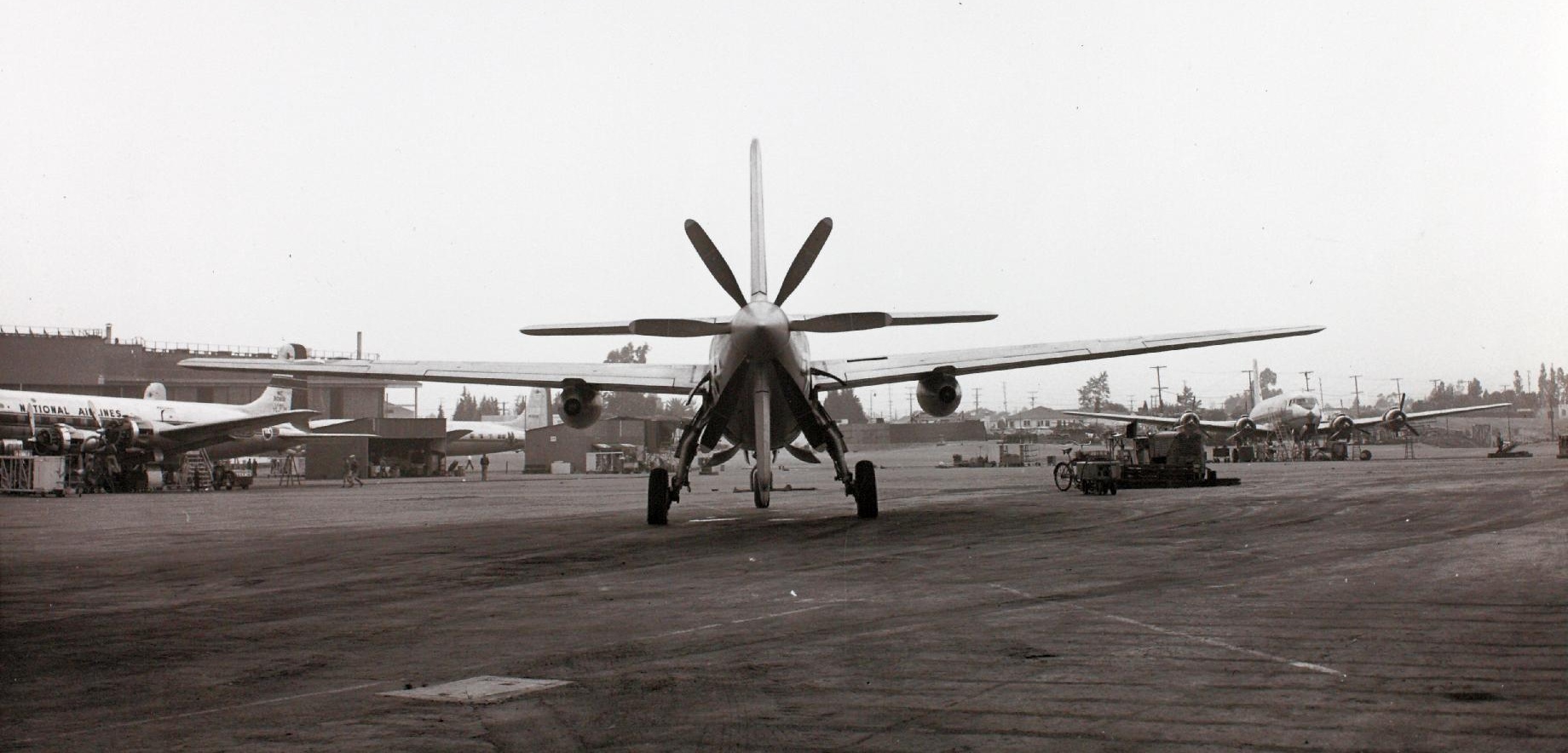
The Douglas XB-42 Mixmaster was an experimental bomber aircraft, designed for a high top speed. The unconventional approach was to mount the two engines within the fuselage driving a pair of contra-rotating propellers mounted at the tail in a pusher configuration, leaving the wing and fuselage clean and free of drag-inducing protrusions. In December 1945, Captain Glen Edwards and Lt. Col. Henry E. Warden set a new transcontinental speed record when they flew the XB-42 from Long Beach, California to Bolling Air Force Base in Washington, D.C. (c. 2,300 miles). In just 5 hours, 17 minutes, the XB-42 set a speed record of 433.6 mph (697.8 km/h).




It must have been a hell of a thing to be in the generation of aviators which started in WWII and ended in Vietnam. So much advancement to see over one career . . . if you lived through it. Not so many off-the-wall experiments anymore, sadly.
At least not any we know aboutNot so many off-the-wall experiments anymore, sadly.

I love that plane. There's a replica hanging from the ceiling of the FBO in Louisville, KYWhen you said staggered wings, I immediately thought of one of the most beautiful airplanes ever made - the Beech Staggerwing. Outside of a warbird, I can't think of a plane I would rather have. Of course, if you're gonna get the Staggerwing, you should also get an Auburn Cord automobile and go full Art Deco....


